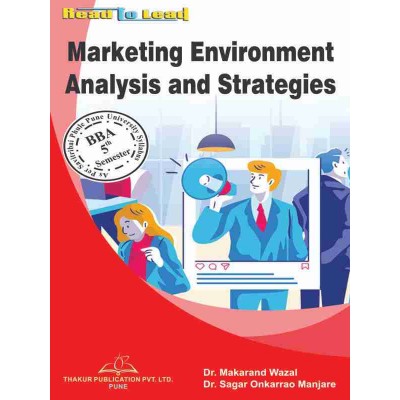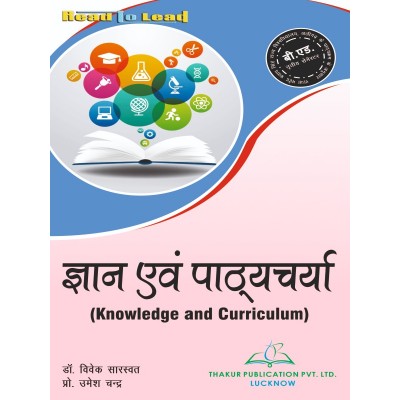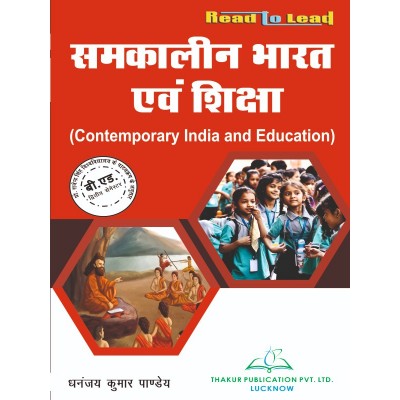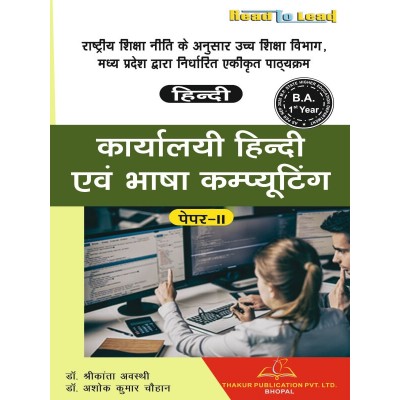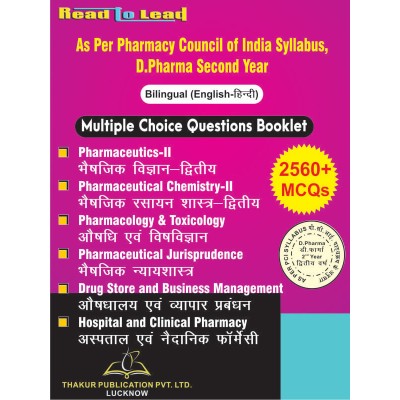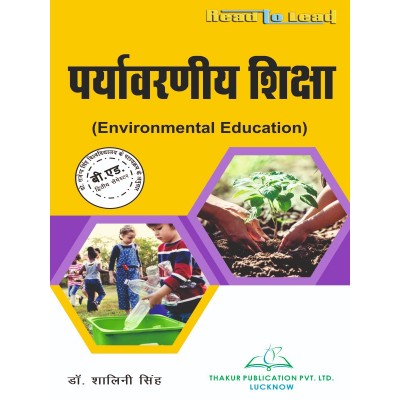Plant Ecology and Phytogeography |Botony paper-II| Bihar B.Sc | Fifth Semester
Tax excluded
AUTHORS : Dr. Kumar , Pradeep Kumar Gupta , Prof. Shyam Sunder Sharma
ISBN : 978-93-6180-255-3
5th sem Syllabus ¼ikB~;Øe½
Paper-II ¼ç'u i=-II½
MJC-9(T): Plant Ecology and Phytogeography
¼ikni ikfjfLFkfrdh ,oa ikniHkwxksy½
|
Unit
|
Topics
|
Hours
|
|
|
1
|
Environment, Ecology, Biosphere, Biome, habitat, niche; Adaptation of hydrophytes and xerophytes Biotic Interactions: Beneficial and harmful interactions (symbiosis, commensalism, amensalism, herbivory, predation, parasitism) |
i;kZoj.k] ikfjfLFkfrdh] tSoeaMy] ck;kse] oklLFkku] fups( tyksn~fHkn vkSj e:n~fHkn dk vuqdwyu
tSfod var%fØ;k,¡& ykHkdkjh vkSj gkfudkjd var%fØ;k,¡ ¼lgthou] ijthfork] lgthfork] 'kkdkgkjh] ijHkf{krk] ijthohokn½ |
06
|
|
2
|
Population Ecology: Characteristics and Regulations Community Ecology: Concept of ecological amplitude; Characters: analytical and synthetic; Ecotone and edge effect; Dynamics: succession (Hydrosere and Xerosere) Ecosystem: Structure and function of ecosystem, food chains and webs, Principles and models of energy flow, ecological pyramids |
tula[;k ikfjfLFkfrdh& fo'ks"krk,¡ vkSj fofu;eu lkeqnkf;d ikfjfLFkfrdh& ikfjfLFkfrd vk;ke dh vo/kkj.kk( y{k.k( fo'ys"k.kkRed vkSj flaFksfVd( bdksVksu vkSj ,t bQsDV( xfrdh( vuqØe ¼gkbMªksfl;j vkSj thjksfl;j½ ikfjfLFkfrdh ra=& ikfjfLFkfrdh ra= dh lajpuk vkSj dk;Z] [kk| J`a[kyk vkSj tky] ÅtkZ çokg ds fl)kar vkSj e‚My] ikfjfLFkfrd fijkfeM |
12
|
|
3
|
Soil: Origin, formation, Composition (Physical, Chemical and Biological), Soil profile and importance Water: Precipitation types (rain, fog, snow, hail, dew), Soil water and Water table |
e`nk& mRifÙk] xBu] la?kVu ¼HkkSfrd] jklk;fud vkSj tSfod½] e`nk ifjPNsfndk vkSj egRo ty& o"kZ.k ds çdkj ¼ckfj'k] dksgjk] fgeikr] vksyko`f"V] vksl½] e`nk ty vkSj ty Lrj |
10
|
|
4
|
Biogeochemical Cycles: Gaseous and sedimentary cycles, Hydrological cycle Environmental Pollution: Air pollution, water pollution, noise pollution, radioactive pollution and their control measures, global Warming and Ozone hole Phytogeography: Major vegetational belts of India, Basic concept of wetlands with special reference to Bihar; Conservation of biodiversity |
tSo&Hkw&jklk;fud pØ& xSlh; vkSj volknh pØ] gkbMªksykWftd pØ
i;kZoj.k çnw"k.k& ok;q çnw"k.k] ty çnw"k.k] /ofu çnw"k.k] jsfM;ks/kehZ çnw"k.k vkSj muds fu;a=.k ds mik;] Xykscy okfeaZx vkSj vkstksu fNæ
ikni Hkwxksy& Hkkjr ds çeq[k ouLifr {ks=] fcgkj ds fo'ks"k lanHkZ esa vknZzHkwfe dh ewy vo/kkj.kk( tSo fofo/krk dk laj{k.k |
12
|
|
|
Total ¼dqy½
|
40
|
|
Practical ¼Á;ksxkRed½
|
1) Determination of pH of various soil and water samples 2) Analysis for carbonates, chlorides, nitrates, sulphates, organic matter and base deficiency from two soil samples by rapid soil tests 3) Study of morphological and anatomical adaptations of hydrophytes and xerophytes 4) Study of biotic interactions of the following: Stem parasite (Cuscuta), Root parasite (Orobanche) Epiphytes, Predation (Insectivorous plants) through specimens/photographs 5) Quantitative analysis of herbaceous vegetation in the college campus for frequency and comparison with Raunkiaer’s frequency distribution law 6) Quantitative analysis of herbaceous vegetation for density and abundance in the college campus field visit |
1) fofHkUu e`nk ,oa ty uewuksa ds pH dk fu/kkZj.k 2) nks e`nk uewuksa ls dkcksZusV] DyksjkbM] ukbVªsV] lYQsV] dkcZfud inkFkZ vkSj {kkj dh deh dk fo'ys"k.k] Rofjr e`nk ijh{k.k }kjk 3) tyksn~fHkn vkSj e:n~fHkn esa dkf;Zdh; vkSj 'kkjhfjd vuqdwyu dk v/;;u 4) fuEufyf[kr dh tSfod var%fØ;kvksa dk v/;;u& ruk ijthoh ¼dLdqVk½] tM+ ijthoh ¼vksjkscSadh½ vf/kikni] ijHk{kh ¼dhVHk{kh ikS/ks½ uewuksa@QksVksxzkQ ds ek/;e ls 5) d‚yst ifjlj esa 'kkdkgkjh ouLifr;ksa dh vko`fÙk vkSj jkSufd;j ds vko`fÙk forj.k fu;e ds lkFk rqyuk ds fy, ek=kRed fo'ys"k.k 6) d‚yst ifjlj esa 'kkdkgkjh ouLifr;ksa dh ?kuRo vkSj çpqjrk ds fy, ek=kRed fo'ys"k.k] QhYM foftV |
6th sem Syllabus ¼ikB~;Øe½
MIC-7(T): Plant Ecology and Phytogeography
¼ikni ikfjfLFkfrdh ,oa ikniHkwxksy½
|
Unit
|
Topics
|
Hours
|
|
|
1
|
Environment, Ecology, Biosphere, Biome, habitat, niche; Adaptation of hydrophytes and xerophytes Biotic Interactions: Beneficial and harmful interactions (symbiosis, commensalism, amensalism, herbivory, predation, parasitism) |
i;kZoj.k] ikfjfLFkfrdh] tSoeaMy] ck;kse] oklLFkku] fups( tyksn~fHkn vkSj e:n~fHkn dk vuqdwyu tSfod var%fØ;k,¡& ykHkdkjh vkSj gkfudkjd var%fØ;k,¡ ¼lgthou] ijthfork] lgthfork] 'kkdkgkjh] ijHkf{krk] ijthohokn½ |
06
|
|
2
|
Community Ecology: Concept of ecological amplitude; Characters: analytical and synthetic; Dynamics: succession (Hydrosere and Xerosere) Ecosystem: Structure and function of ecosystem, food chains and webs, Principles and models of energy flow, ecological pyramids |
lkeqnkf;d ikfjfLFkfrdh& ikfjfLFkfrd vk;ke dh vo/kkj.kk( y{k.k( fo'ys"k.kkRed vkSj flaFksfVd( xfrdh( vuqØe ¼gkbMªksfl;j vkSj thjksfl;j½ ikfjfLFkfrdh ra=& ikfjfLFkfrdh ra= dh lajpuk vkSj dk;Z] [kk| J`a[kyk vkSj tky] ÅtkZ çokg ds fl)kar vkSj e‚My] ikfjfLFkfrd fijkfeM |
10
|
|
3
|
Soil: Origin, formation, Composition (Physical, Chemical and Biological), Soil profile and importance |
e`nk& mRifÙk] fuekZ.k] la?kVu ¼HkkSfrd] jklk;fud vkSj tSfod½] e`nk ifjPNsfndk vkSj egRo |
04
|
|
4
|
Biogeochemical Cycles: Gaseous cycles, Environmental Pollution: Air pollution, water pollution, noise pollution, radioactive pollution and their control measures, global Warming and Ozone hole Phytogeography: Major vegetational of India, |
tSo&Hkw&jklk;fud pØ& xSlh; pØ
i;kZoj.k çnw"k.k& ok;q çnw"k.k] ty çnw"k.k] /ofu çnw"k.k] jsfM;ks/kehZ çnw"k.k vkSj muds fu;a=.k ds mik;] Xykscy okfeaZx vkSj vkstksu fNæ
ikni Hkwxksy& Hkkjr ds çeq[k ouLifr {ks=] |
10
|
|
|
Total ¼dqy½
|
30
|
|












